Matador Network's Blog, page 1108
April 29, 2019
Airbnbs in Game of Thrones locations
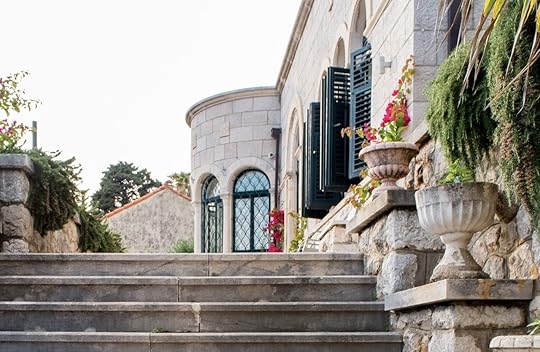
Still on an adrenaline high from last night’s historic bloodbath, it’s a bit of a letdown to wake up this morning and realize there are only three more episodes left of Game of Thrones… ever. Leaving Mondays with even less to talk about until football mercifully comes back in August. That means you’ve got four months to go absolutely anywhere in the world, without having to stress about finding a WiFi connection on Sundays, opening up an entire world of vacation possibilities. And if you’re going through GOT withdrawal this summer, there’s still good news. Airbnbs the world over are set in — or draw inspiration from — parts of the show and can make you feel like you’re living all eight seasons over again, minus the beheadings.
1. Villa Mediterranean in Croatia
Dubrovnik, Croatia
$1,003 a night
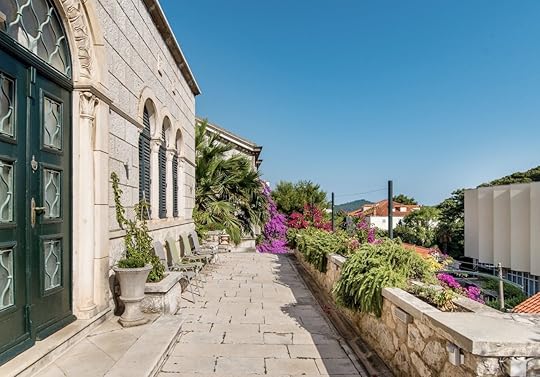
Photo: Airbnb
If your whole GOT watch party has been mumbling about taking a trip to see some of the filming sites, short of renting a castle you’d be hard-pressed to find a place that fits everyone better than this villa near the old city in Dubrovnik. The city has over a dozen different settings from the show, primarily of King’s Landing, nearly all of which can be visited in an afternoon. Most notably, you can stroll the streets where Cercei made her famous “Walk of Atonement.” Though we’d highly suggest not trying to relive that one, even after a few drinks.

Photo: Airbnb
Once you’ve taken an entire phone’s worth of pictures, retire to this five-bedroom villa with its own private sauna and terraces with views of the water. The classic stones and arched windows feel like they should be part of the set, and though it’ll run you over a grand a night, you’ve saved plenty of money using your cousin’s HBO Go account. So splurge.
2. Palatial apartment in Spain
Seville, Spain
$613 a night
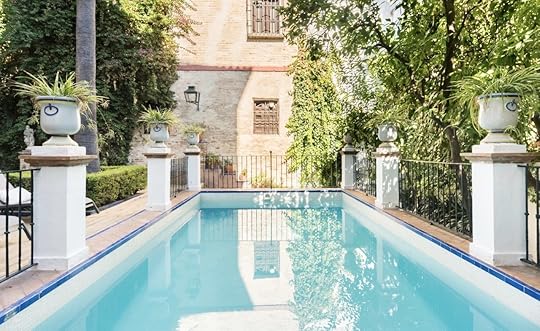
Photo: Airbnb
This opulent five-bedroom flat in the heart of Seville seems like the kind of place you’d live if you were Dornish royalty. With gold picture frames, Persian rugs, fine art, and marble pillars, you’ll feel exactly like a noble Martell, before they were slaughtered by a whole manner of terrible circumstances, of course.

Photo: Airbnb
Assuming you can stave off the paranoia of imminent doom, the apartment is pretty sweet, a venerable museum of culture that you can live in for about $600 a night. The five-bedroom, 6.5-bath dwelling is actually part of an even larger house that’s been divided into these luxury apartments and sits right on the historic Plaza de Dona Elvira. You’ll also only be a short walk to the Universidad de Seville and Alcazar Palace — which served as the water gardens of Sunspear.
3. Sunny, peaceful chalet in Iceland
Akureyri, Iceland
$233 a night

Photo: Airbnb
The land beyond the wall isn’t necessarily the most inviting place, but that’s why reality is often better than TV. While the countryside of northern Iceland is the stand-in for the fictional no-man’s land outside Castle Black, in real life it’s a serene, peaceful escape nearly any time of year. This two-bedroom chalet with floor to ceiling windows is about six miles from the Arctic town of Akureyri, far enough away you’ll feel like you’ve set up camp somewhere between civilization and the savages.
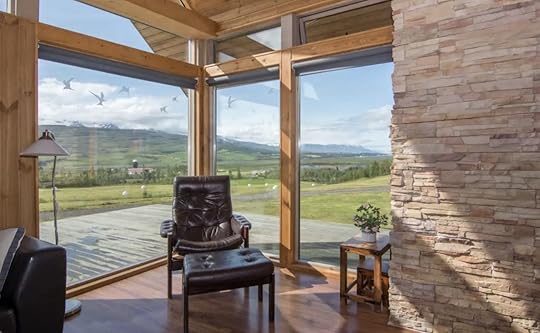
Photo: Airbnb
Of course, during the summer it won’t feel quite so winter-y, and as you’re in the northernmost major city in Iceland there’ll be sun out… pretty much all the time. When winter comes, however, you’ve got a front-row seat to the Aurora Borealis and a cozy hideaway from the bitter cold. The area is also known for bird and wildlife watching too, though the owner has not reported any sightings — or possessions — by a three-eyed raven.
4. Kasbah Tebi in Morocco
Ouarzazate, Morocco
$39 a night

Photo: Airbnb
Morocco may be best known for its Blue City in Chefchaouen, but GOT fans also know it’s home to the Yellow City of Yunkai where Daenerys gained her Unsullied army and wiped out the slave masters. You’ll live in a private bedroom inside this artfully restored Kasbah in the historic Ksar of Ait Ben Haddou. In addition to a TV setting, you’ll also be sleeping inside a UNESCO World Heritage site in a fortified house owned by the same family for 300 years.

Photo: Airbnb
Get the sensation of gazing out over the Yellow City as you enjoy your breakfast on the Kasbah’s terrace, with views of the valley and the Ksar of Ait Ben Haddou. Later in the day, you’ll also enjoy traditional Moroccan food prepared by the family and served in the historic dining room. At under $40 a night you’d be hard-pressed to find a better lodging experience in Morocco.
5. Drummond Tower in Ireland
Drogheda, Ireland
$134 a night
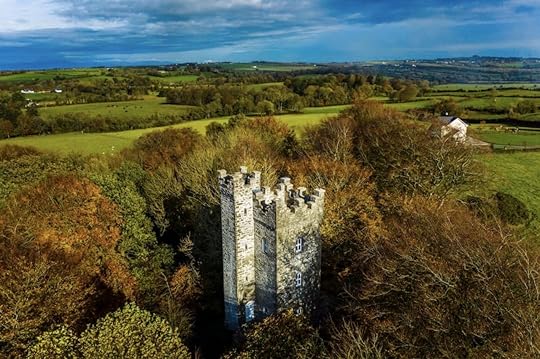
Photo: Airbnb
Castles are a charming place to spend a day, provided you’re not invited there for a wedding banquet with your pregnant wife and mother. Odds are this 19th-century tower in the Irish countryside will be a little more peaceful than the one poor Robb Stark found himself at, built by Victor Drummond Delap in 1858 as a remembrance of his late mother (who was not, fortunately, murdered at his wedding).

Photo: Airbnb
Host Eanan promises not to sell you out to whoever you happen to be at war with, rather promising four floors of pure relaxation including a top-floor castellated roof terrace. Though it has only one bedroom (on the second floor) the main-level living room has two couches, one of which folds out into a sofa bed. Perfect for your army to sleep in… just in case. 

More like this: The best one-day ‘Game of Thrones’ road trip through Northern Ireland
The post These 5 Airbnbs will make you feel like you’re living in ‘Game of Thrones’ appeared first on Matador Network.

Olympic National Park mountain goats

Imagine hiking through lush rainforest in Olympic National Park in Washington state. Your hike climbs up and up into the alpine lakes and meadows of the Olympic mountains. You climb until you stand upon a peak, looking down on it all — the mountains, rivers, lakes, and trees. You look up and see a mountain goat high above you, limp with sedation, being carried in a sling beneath a helicopter, gliding across the sky.
View this post on InstagramA post shared by WA Dept of Fish & Wildlife (@thewdfw) on Sep 12, 2018 at 2:04pm PDT
Last summer, the National Park Service began a project to relocate mountain goats out of the Olympic Peninsula, where they are a non-native species. The goats are shot with tranquilizer darts, flown by helicopter out of the mountains, and transported to their natural habitats in the Cascade Range.
Protecting a unique and furry creature

Photo: Dan Ratliff/Shutterstock
Within Olympic National Park, there are multiple distinct ecosystems, with features only found on this isolated peninsula. One unique creature — an endemic species, one that only lives on the peninsula — is the Olympic marmot. Young marmots play with their kin in an otter-like fashion, making them one of the most lovable rodents in the world.
The same geographic isolation that caused the Olympic marmot to evolve as a distinct species also insulated the peninsula from various species that are common in nearby regions, such as lynx, wolverine, ground squirrels, grizzly bears, coyotes, red foxes, bighorn sheep, and mountain goats.
Mountain goats don’t belong in Olympic National Park.

Photo: Matt McArdle/Shutterstock
In the 1920s, hunting interests introduced goats to the peninsula. As the largest herbivore present in the area, goats are damaging the natural ecosystem in the Olympics. Alpine vegetation is notoriously fragile and can take years to recover. Both goats and hikers can damage such vegetation, and when goats and hikers are thrown together, the damage becomes worse: Goats crave salt and will tear up the earth to consume hikers’ urine.
In the 1980s, a previous relocation program reduced goat numbers significantly, but the goats stubbornly repopulated the peninsula over the ensuing decades. Before the current relocation program started, the goat population in the Olympics was estimated at 725 and was increasing at eight percent per year.

Photo: HTurner/Shutterstock
Crews removed 115 goats from the park by air last September. Relocation is slated to continue this summer and possibly after that. Once relocation efforts are no longer feasible, officials will ask specially licensed hunters to kill the remaining creatures. While it might sound harsh, wildlife advocates support the plan. Ultimately, this program will replenish goat populations in the North Cascades and help to restore and preserve the singular Olympic alpine ecosystem.
Protect yourself from the fierce creatures.
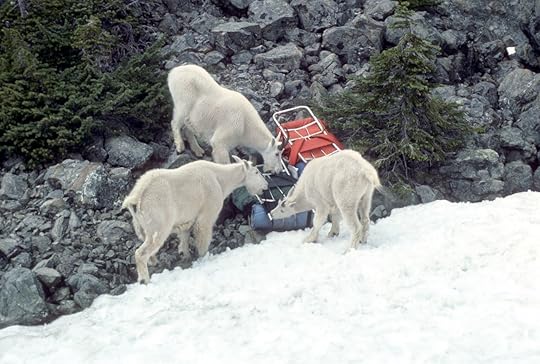
Photo: steve estvanik/Shutterstock
Domesticated goats may be considered adorable, but mountain goats can be deadly; they killed a hiker in Olympic National Park some years back. The National Forest Service provides detailed guidelines for hikers in areas with mountain goats.
Hikers should stay at least 50 yards from any goats and slowly move away if a goat approaches. If a goat gets too close, it’s best to scare the animal away by yelling, waving a piece of clothing, or throwing rocks. Visitors should urinate away from trails and try to find rock-crevices rather than relieving themselves on dirt, in order to protect sensitive vegetation from these salt-craving creatures.
Common sense goes a long way. You shouldn’t feed goats or leave backpacks unattended. It’s important to remember that any action you take that habituates large animals to humans is dangerous, both to people and to the animals. Just like bears, if goats become too comfortable around humans, park officials might need to kill them. 

More like this: Saving wolverines in the rugged North Cascades of Washington State
The post Flying mountain goats through the sky to save a national park appeared first on Matador Network.

Best Mexican food in Yucatan

When it comes to Mexican food, we all have a general understanding of the basics like tacos, burritos, and loaded plates of cheesy nachos. But one of Mexico’s most underrated cuisines, and one that you should get to know first hand, is that of the Yucatán Peninsula. Inspired by ingredients and cooking techniques used by the ancient Mayans, as well as those brought over by Spanish conquistadors, Dutch merchants, and Lebanese immigrants, this beautiful part of Mexico serves up fusion flavors found nowhere else in the country.
From deep-fried tortillas topped with slow-roasted pork to Edam cheese stuffed with spiced meat and raisins, there’s one thing we know for sure: Yucatecan food is a treat for the senses. From Mayan food made with Yucatán ingredients to a savory Yucatán dessert, these are the dishes you need to know.
1. Cochinita pibil

Photo: Playa del Carmen/Shutterstock
Cochinita pibil is a slow-cooked pork dish marinated in achiote and bitter Seville orange, and it’s Yucatán’s star plato fuerte (main meal). Traditionally reserved for Sunday family dinners in rural parts of the region, today you’ll see the dish sold from street food stands and in almost every local restaurant. But not all cochinita pibil is created equal. For the best plate of cochinita, you’ll need to find somewhere that cooks the meat as the ancient Mayans did over 1,000 years ago: very slowly, under the ground, and wrapped in banana leaves. The ridiculously succulent, melt-in-your-mouth meat is best savored in a fresh corn tortilla with pickled red onions, habanero salsa, and a handful of cilantro.
2. Queso relleno
This one’s for the cheese lovers. Considered Yucatán’s ultimate fusion dish, queso relleno is a hollowed out ball of Edam cheese (from the Dutch) that’s filled and baked with minced pork meat, raisins, almonds, and olives (from the Mediterranean), and topped with a creamy tomato and k’ool blanco sauce (from the Mayans). It’s rich, salty, and oh-so-cheesy. It’s kind of irresistible, and almost certainly addictive.
3. Sopa de lima

Photo: Regina Osorio/Shutterstock
A soup made from shredded chicken and limetta (sweet) limes, sopa de lima is a very simple, yet delicious, citrusy dish. Usually served as a starter or side, the best sopa de lima will be a perfectly balanced and refreshing — but not too tangy or bitter — chicken broth with a generous handful of cilantro and crispy fried tortilla chips. It’s believed that the ancient Mayans traditionally used wild turkey and corn to make an earlier version of this soup, but once the Spanish arrived in the 16th century, these staple ingredients were eventually replaced by newly imported limes and chicken.
4. Crema de chaya
You’ll see chaya, a native species of spinach that grows in abundance in Yucatán, appear in several dishes. While you’ll be able to get a taste of it in empanadas, tortillas, and tacos up and down the region, the best way to eat it is in a delicious creamy soup known locally as crema de chaya. Now stay with us here: We know spinach soup might not sound all that exciting. But remember you’re in Yucatán, a place where every kitchen has a way of making even the simplest of ingredients taste ridiculously good.
5. Marquesitas

Photo: Playa del Carmen/Shutterstock
Said to have been invented in Merida by an entrepreneurial ice cream vendor in the 1940s, marquesitas are a favorite street snack in Yucatán. It’s made by pouring sweet batter over a hot iron and stuffed with sweet and savory ingredients. Marquesitas are like a thinner, crunchier version of the French crepe. While the crepe style will likely be familiar, what may come as a surprise is the unusual combo of flavors offered. While you are free to choose your own ingredients, Yucatecans will only take theirs with Nutella and Edam cheese. It’s a “love it or hate it” kind of deal, but you have to try it.
6. Relleno negro
A head’s up: Relleno negro is a plate of thick cuts of turkey swimming in a jet-black, runny sauce and it isn’t the most Instagrammable meal. But for those brave enough to take it on, this masterful Mayan dish rewards even the pickiest of taste buds. A recipe that, if done properly, can take hours to prepare, relleno negro is made by slow cooking turkey breast in a recado negro, a rich, dark paste made from slowly simmering achiote, charred chili peppers, cumin, peppercorns, cloves, and other spices. It’s most commonly served with hard-boiled eggs and warm tortillas.
7. Panuchos
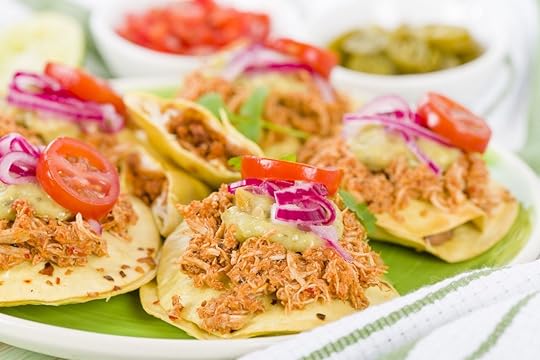
Photo: Paul_Brighton/Shutterstock
A deep-fried tortilla filled with juicy pork belly, panucho is an artery clogging, heart attack-inducing Yucatecan street food that few have the self-control to pass up. After the bean-stuffed tortillas have been crisped up to perfection and filled with your meat of choice (usually cochinita pibil or lechon, slow roasted pork belly), you can load them up yourself with the usual condiments: pickled red onions, cilantro, shredded white cabbage, and some homemade green and red fiery salsas. While you’re at it, try the equally delicious salbutes. They’re pretty much the same as panuchos, only without the beans and puffed up like mini naan bread. 

More like this: Where to find the best tacos in Mexico City
The post 7 traditional dishes from the Yucatán Peninsula better than tacos and burritos appeared first on Matador Network.

Marriott launching homeshare service
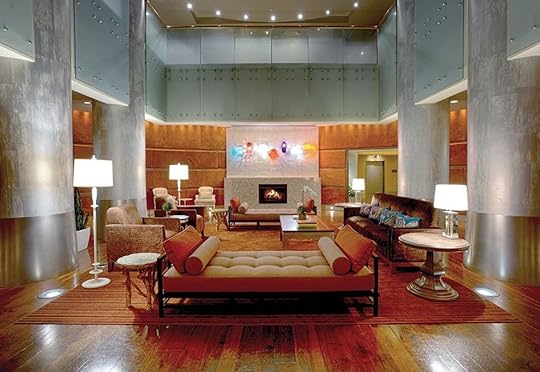
It looks like Airbnb might finally have a real competitor in the homesharing space. Marriott, one of the world’s largest hotel companies, is launching Homes & Villas by Marriott International next week after a successful pilot of 200 homes in London last year. Marriott is collaborating with a variety of different property management companies and plans to offer homesharing services in over 100 different markets all over the world. Much like Airbnb, Marriott plans to act as an online distribution platform for its available homes.
Stephanie Linnartz, Marriott’s Global Chief Commercial Officer, explained that property management companies will pay Marriott a platform fee, and will be tasked with managing the properties themselves. “The best way I can think about it,” she said, “is to compare it to how Marriott manages hotels. That’s what these property management companies will do for these homes.”
Importantly, Homes & Villas will not be exclusive, meaning property partners can also continue to advertise and distribute homes on Airbnb, HomeAway, and Booking.com. Customers can, however, redeem Marriott Bonvoy points when they book via Homes & Villas, which is expected to be a key point of attraction. The earn rate for Homes & Villas points will be the same as what Marriott offers for its long-stay hotels — five points for each $1 spent. Guests can also use their points toward special tours and activities in the area.
While Marriot claims it’s not trying to replace Airbnb, Linnartz says, “Our goal is to be the world’s favorite travel company, offering a comprehensive travel platform through Marriott Bonvoy.” 
H/T: Skift

More like this: The most epic place to rent in Airbnb’s most trending destinations
The post Marriott is taking on Airbnb by starting a homesharing service appeared first on Matador Network.

April 26, 2019
Things to do in Little Havana, Miami

“You know I used to get my car broken into here?” I said to my friend from LA as he met me downstairs at Miami’s Life House Hotel. “Seriously, I lived right around the corner and every time I parked on the street, BAM! I was missing a cell phone charger.”
“Oh, that’ll still happen,” a man sitting in the hotel’s library coworking area said, looking up from his laptop. It was nice to hear the old neighborhood hadn’t changed.
Not that car break-ins are exactly a boon for tourism, but in an era when the arrival of things like sleek boutique hotels often also mean the death knell for a neighborhood’s character, Little Havana, it seemed, still has its soul.
We strolled a couple of blocks on uneven pavement, past a beat-up white station wagon selling a Styrofoam cooler of camarones (shrimp) from the back. Ear-splitting bachata music poured from the third floor of an old stucco apartment building as people sat slumped against the front door drinking Presidente. It wasn’t dangerous, per se. It’s just wasn’t anywhere a realtor would describe as having “curb appeal.”
“Remind me why we’re not going to South Beach?” my friend joked as a police cruiser rolled by.
“This is why,” I said, as we turned the corner and found ourselves smack in the middle of a Cuban street party. A Latin band was playing in the open entrance to a bar while tourists and spandex-clad locals shook their hips, sugary mint-garnished cocktails in hand. Inside we ventured to the back patio where another band played under a bandshell shaped like a pineapple. We lit up a couple of cigars and sat under tropical plants as the cool January breeze blew through the patio.
“Welcome to Little Havana,” I said.
A legendary jazz club is restored to glory, leads a resurgence.
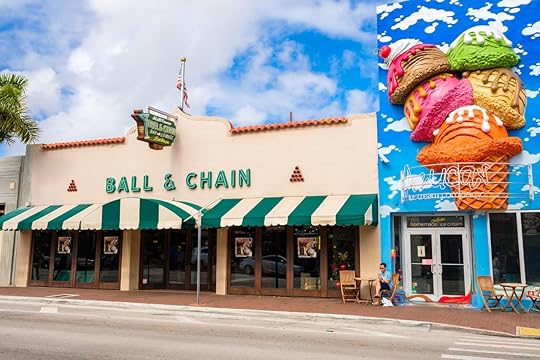
Photo: Fotoluminate LLC/Shutterstock
The bar we were sitting in, Ball and Chain, is the anchor of the newly revamped SW 8th Street, known colloquially as Calle Ocho.
During the 1930s, Ball and Chain was where black musicians, who were not allowed to perform on Miami Beach after midnight, played after-hours shows for locals. It reopened a few years ago after several other iterations — including a furniture store — with the original Dade County Pine ceiling and an interior painstakingly restored to look exactly as it did during its heyday. The walls today are lined with posters advertising performances from Count Basie and Billie Holiday.
It’s the retro-cool icon of what once-rough-and-tumble Little Havana has become this decade: a neighborhood that’s opened creative, entertaining businesses that fit seamlessly into the neighborhood’s style.
The man behind the project is Bill Fuller, co-owner of Madroom Hospitality and managing partner of the Barlington Group, which owns a sizeable amount of the property in Little Havana’s historically protected district around Calle Ocho.
He and his partners are the antitheses of the big developers who turned Miami’s briefly hip Wynwood arts district into a maze of parking garages and mid-rise apartment buildings no artists could ever afford. And the thirsty real estate people who turned quaint South Beach into America’s sunniest tourist trap.
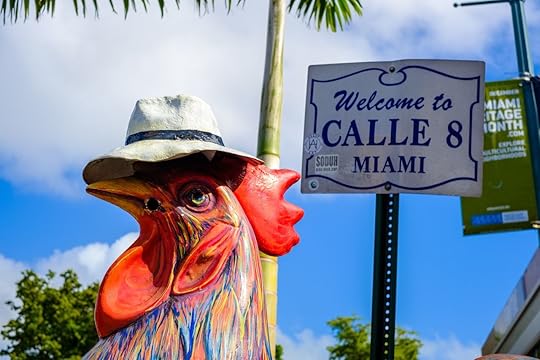
Photo: Fotoluminate LLC/Shutterstock
“It’s about protectionism. We need to protect the identity; we don’t need to grow as fast as some of the allegedly cool neighborhoods. We like the slow, organic growth,” Fuller says.
He goes on to explain how he’s turned down big offers for many of his properties, primarily because the bigtime investors don’t share the vision for the neighborhood. “If you hold out for great local entrepreneurs, you can blow through the economics of what a big, national tenant can offer you. South Beach has been a great lesson for South Florida. The short-term gains of high rents are not good for the neighborhood.”
Along Calle Ocho, you’ll find a fresh oyster bar, a gourmet donut shop, and a you-can-only-order-once Thai tapas joint with a perpetual line. But you can still stroll up to a ventanilla and get a café con leche and a croqueta for a dollar.
You’ll also find the Union Beer Store, a wrestling-themed craft beer bar full of Florida beers and old wrestling pay-per-views on TV. Here, you can enjoy Funky Buddha Floridian Wheat beer, with notes of grapefruit and banana, while watching Ricky the Dragon Steamboat take on Macho Man Savage at Wrestlemania 4.
Though the concept sounds straight out of any American hipster enclave, Union reminds you that you’re still somewhere very Cuban, with “Estevie 3:16” signs throughout the bar. It’s an allusion to how a Cuban might pronounce Steve Austin’s most famous catchphrase.
“They’re a classic example of what this neighborhood is,” Fuller says referring to his beer-slinging tenants. “The next generation of Cuban-Americans growing authentically, responsibly.”
A Cuban-American connection keeps the neighborhood from losing itself.
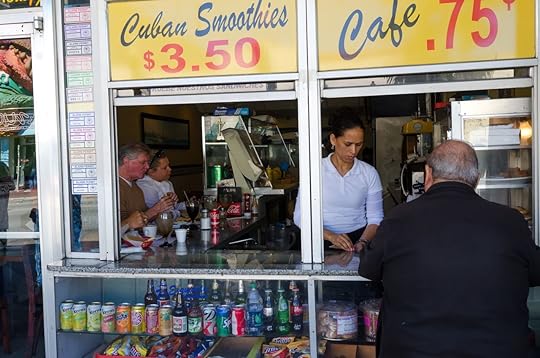
Photo: BlackMac/Shutterstock
Little Havana is a bit of a misleading name, at least it is in 2019. When Cuban immigrants first came to Miami in the 1950s and ‘60s, they settled in this area about a mile southwest of downtown, scooping up the hodgepodge of bungalows, Mediterranean-style houses, and tropical cottages that fill the blocks.
But as Cubans gained affluence they moved out of their immigrant enclave and into suburbs. They were replaced mostly by Miami’s newest immigrant class: Central Americans.
But even now, that is changing.
“What you’re getting now is maybe someone that’s coming from (Miami’s financial district) Brickell, who’s been in Miami for a couple of years,” says Frank Melo, who owns Cedano Realty Advisors and has been managing, buying, and selling property in Little Havana for over 17 years. “They see Little Havana and say, ‘Hey, that’s only a stone’s throw from Downtown and Brickell, and I can live there for half the price.’”
Still, though transplants roll in, Cuban-Americans still feel a connection to the area. And many are setting up shop here to maintain some of that culture.
“For my first bar, I wanted something close to my roots,” says Cuban-born Julio Cabrera, who gained national acclaim in South Beach as head mixologist at the Regent Cocktail Club. GQ named him America’s Most Imaginative Bartender in 2013. “After I was involved with Ball and Chain I felt something special in Little Havana and Calle Ocho. I knew that was the place when I was ready.”
This year he opened Café La Trova, which pays homage to 1950s Cuba as bow-tied bartenders shake cocktails in rhythm with the live salsa band sent against a Havana street façade. Its back bar is straight 1980s Miami, with plentiful mirrors and not-even-a-little-subtle cocaine references. Drinks range from the La Chancleta, a cachaca drink served in a house slipper, to the Yin y Tony, another play on Cuban Spanglish.
The fact the rent in Little Havana was also half what he would pay in South Beach or Wynwood didn’t hurt either.
“It’s cheaper now,” he says. “In two or three years? I don’t know.”
Stable rents keep Little Havana residents from being forced out.

Photo: Fotoluminate LLC/Shutterstock
Gentrification is most often criticized for displacing the people who gave a neighborhood its character. But that’s not happening in Little Havana, in large part because developers realize their importance.
Or, as Fuller puts it, “The best amenity of this neighborhood is the people who live here. Without those people, it’s Epcot Center.”
Rents, he says, are below market in many buildings around the historic core, in large part because landlords have relationships with tenants that stretch back decades. It’s also harder to tear the neighborhood down and build cookie-cutter midrises in Little Havana because the properties are so small.
“You don’t have big blocks of ownership here like you did in Wynwood. It’s fragmented,” Melo explains. “So within a block, you can have an owner of 30 years, and an owner of 40 years, and one who owes nothing and one who owes a lot, and the motivations are completely different. Those motivations make remodeling very slow.”
Little Havana is also massive, stretching from Interstate 95 west over three miles, and about a mile from top to bottom. That means that while parts of Little Havana — like the area along the Miami River — might see high rise growth and new construction, it’s not even noticeable to tourists in the historic core.
“I’ve been very clear with the midrise developers who’ve come in here,” Fuller says. “I say I’m not gonna stop you from doing whatever zoning allows you to do. But if you come anywhere near the historic part of this neighborhood I will publicly fight you.”
A tourist attraction that doesn’t feel touristy

Photo: Kamira/Shutterstock
Tourists flock to Little Havana to the tune of nearly three million a year, and nearly every day you will see busloads of them buying up Panama hats and guayaberas in the souvenir stores. Strolling the streets with hand-rolled cigars, mojito in hand, watching old men play dominoes at Maximo Gomez Park.
“Americans and Europeans alike have this curiosity of what defines Latin Culture,” says Melo, who is Dominican-American. “Here they get to see it without getting on a plane.”
But whether or not this is sustainable remains to be seen.
A week later, Melo and I are strolling through the Viernes Culturales street fair, as a live Colombian band plays and people dance in the street. I’m carrying a mojito and a cigar. He has a beer. A street vendor offers us a look at some Afro-Cuban art from her booth. The fair is a monthly occurrence and has been going on since even before Little Havana was cool.
“We have 90 buses of tourists a day stopping here now,” he says over the band. “And it’s happening now that rents go up in some places 20-25 percent. You have it now, a developer can come in and build something that doesn’t fit the current mold of the neighborhood, and it’s eroding very quickly.”
On this cool Friday night, it still feels like Little Havana, and not what some out-of-town developer feels Little Havana should be. In a city that erases its history as soon as it makes it, this neighborhood holds out hope that maybe there are still developers and business people who appreciate character over cash. Who value place over profits. And while the beaches in Miami will always be the biggest draw, Little Havana may still be its biggest asset. At least it is for the time being. 

More like this: How Ft. Lauderdale and Broward County are moving past spring break and botched elections
The post How Miami’s Little Havana cleaned itself up without losing its soul appeared first on Matador Network.

Visit the Nusa Islands off Bali
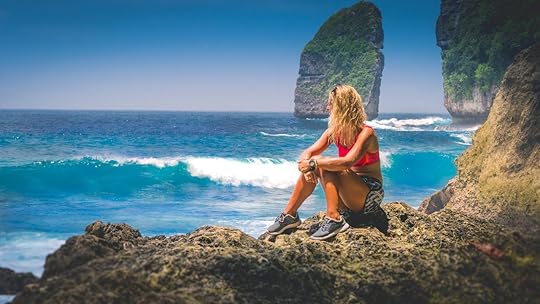
The beaches, surf, and culture of Bali have been attracting sun-worshippers for nearly a century. Yet most visitors to this Indonesian island still don’t venture further than the mainland, despite it being just a short boat ride from a number of other visit-worthy isles. Bali saw more than six million tourists in 2018. But the far less crowded islands of Nusa Penida, Nusa Lembongan, and Nusa Ceningan — just off of Bali’s east coast — are reminiscent of the serene Bali of decades ago. These islands offer stunning beaches, mellow vibes, and uncrowded surf breaks. Here is what to expect.
Nusa Lembongan

Photo: AsiaTravel/Shutterstock
The second largest of the three islands, Nusa Lembongan is a far cry from the hectic pace of Bali’s tourist enclaves. Rich marine life and healthy coral await, making Nusu Lembongan ideal for divers and snorkelers. The two beaches that attract most of the visitors are on Lembongan’s northwest coast. They’re Jungut Batu, the longest stretch of sand on the island, and Mushroom Bay, a quaint white-sand cove with beachside warungs, or small restaurants.
These two beaches are certainly worth a visit, but you want to spend most of your sun time on the powdery white sand of Dream Beach — or on the cliffs overlooking it — on the southwestern part of the island. Just to the north is a narrow stretch of sand fringed by limestone cliffs and a picturesque cave that emerges at low tide known as Sunset Beach or Sandy Bay Beach. Sitting between the two beaches is Devil’s Tear, a rocky outcrop that spouts out water, or, as the locals would have you believe, the tears of the devil.
Nusa Lembongan is about much more than beaches, however. The north and west of the island are covered by mangrove forests, which you can explore in jukungs, small outrigger boats manned by “gondoliers” who steer them through the narrow canals. The island is also famous for seaweed farming, which can be observed off the cliffs on the southwestern coast of the island. Seaweed is also commonly dried in front of homes on the northern side of the island.
There are three main surf spots on the island, all located near Jungut Batu beach on the western side. You’ll reach these by paddling out from Coconut Beach. A spot that is perfect for beginners is Playgrounds, which has mellow take-offs, short right-handers, and longer left-handers. Accessible by boat, Lacerations consists of small to medium swells with long right tubes. The third break is called Shipwrecks and is also accessible by boat. Here you’ll find world-class right-handers that should only be attempted by experienced surfers.
As with surfing, Nusa Lembongan has three main diving locations. Lembongan Bay is ideal for beginners because of calm conditions and a maximum depth of 10 meters. The area is peppered with coral bommies, or outcrops, which are home to frog fish, eels, and silversides. Blue Corner is the spot for more experienced divers and features overhanging terraces and dramatic 50-meter drops. You may see snappers, jacks, and the occasional mola mola as you push through the water. On the northeast end of the island, Mangroves is a coral reef with small bommies suitable for all divers.
Nusa Ceningan

Photo: xquero/Shutterstock
Nusa Ceningan is the smallest of the three islands and is located in between the other two. It’s accessible from the southeastern side of Nusa Lembongan via a yellow suspension bridge, which is a landmark in its own right. The bridge collapsed in 2016, killing nine people and injuring many others. It has since been rebuilt and named the Bridge of Love. Once you arrive on the island, be ready for cliffs and mangroves galore, along with stellar views of the larger Nusa Lembongan and even Bali beyond. The islet currently has only a handful of hotels and restaurants, though it’s slowly gaining popularity.
The first stop for most visitors to Nusa Ceningan is Blue Lagoon, a rocky cove with an impressive view of waves crashing into the shore below. There used to be a cliff jumping point here, but it has recently been closed due to safety issues. Adrenaline junkies can still cliff jump from Mahana Point, a small bar that doubles as a cliff jumping point on the southeastern side of the island. If you’re looking to relax instead, pack a meal and take a dip at Secret Point Beach. There’s a small cave for after-dinner explorations. Among the half dozen or so lodging options, Ceningan Island Resort stands out for its zip-line, which lets you glide between cliff points. Ceningan Point on the southwestern part of the island is a surf break known for its exposed left-handers.
Nusa Penida

Photo: Danaan/Shutterstock
By far the largest of the trio of islands, Nusa Penida is most famous for Kelingking, a T-Rex-shaped rock formation on its western coast. The most Instagrammable shots of the site are taken from a viewpoint towering over a secluded white-sand beach. If you’re game enough, hike down the steep path to enjoy the powdery sand and crystal clear water below. Just to the north is a natural rock pool that opens out onto the ocean, known as Angel’s Billabong. The neighboring Broken Beach, which is dominated by the remains of what was once a massive cave, overlooks an arched tunnel in the cliffs that feeds water into Angel’s Billabong.
Like the other two, Nusa Penida is also known for world-class diving. The rather unimaginatively named Manta Point, on the southwestern side of the island, is a great spot for getting close and personal with the area’s marine life. North of the island, Toyapakeh has great visibility and virtually no currents. The area is home to reef coral formations including gorgonians, along with sea turtles and colorful schools of fish. Crystal Bay is the best location around Bali to see mola mola swimming through the healthy coral close to the beach, and a huge variety of fish including trumpetfish, rainbow fish, and unicornfish.
Getting There
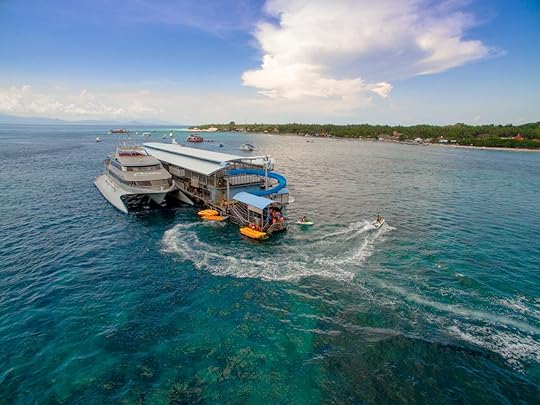
Photo: raditya/Shutterstock
The cheapest way to get to Nusa Penida and Nusa Lembongan is by hopping on a public boat in Sanur, at the end of Jalan Hang Tuah. The journey takes around 90 minutes. Multiple operators also offer speedboats that ply the same route and take around 30 minutes to reach either destination. Multiple companies operate passenger boats to the island multiple times per day, with prices ranging from $30 to $50 USD. 

More like this: How to hike Mt. Batur, an active volcano in Bali
The post These islands near Bali are still uncrowded slices of paradise appeared first on Matador Network.

Best things to do in Breckenridge
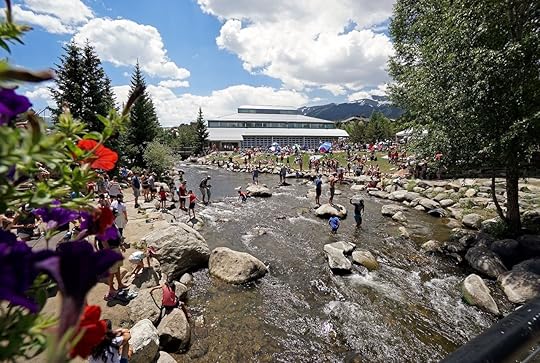
It’s hard not to love Breckenridge. Ask anyone who’s been, and they’ll probably rattle off a list of reasons they seriously considered staying after their last visit.
An old mining town, Breckenridge never quite lost its frontier spirit. It’s not splashy like Aspen or Vail, but it has 187 enviable ski trails to keep devotees entertained and a Victorian-studded downtown to keep them every bit as charmed. It even hosts the tallest chairlift in North America, the Imperial Express Superchair, which climbs 12,840 feet up the resort’s Peak 8.
Most fall for this Breckenridge, the one buried beneath powder six months out of the year, but it only tells half the story. And in many ways, it skips over the best parts.
“In winter, there’s really only two things to do a lot of here: ski and drink,” explains Jimmy Walker, the brewmaster at the Breckenridge Brewery and a Breck resident for 22 years. “So unless you’re proficient at both, it can be tough. In summer, there’s just so much more to do.”
Around here, recreation almost always involves good beer or the great outdoors, but the warmer months enable a wider variety of activities, from mountain biking to river rafting to summer concerts. Meanwhile, downtown businesses break out the patio furniture, and après-ski huddles melt into sunbathing sessions that make the historic center even more inviting.
Summer may not be the season most people associate with Breckenridge, but according to Walker, a July visit might actually convince you to relocate.
“I can’t tell you how many people have moved out here after visiting in the summer,” he says. “Anyone that falls in love with Breckenridge in the winter, I tell them, ‘Pack a big bag if you ever come out in July or August — because you won’t go back.’”
Everyone swaps their snowshoes for hiking boots.

Photo: Kris Wiktor/Shutterstock
There’s no such thing as inside weather in Breckenridge. Snowing? Time to hit the slopes. Almost blizzarding? All the better if it means shorter chairlift lines.
As the temperature rises, that outdoor enthusiasm shifts from pistes to trails, which is hardly a surprise given the hundreds in the area. National forest stretches in every direction from Breckenridge. From the town center, hikers can access beloved trails like the Carter Park Trail and the Burro Trail at the base of Peak 9 without ever setting foot in a vehicle. Both splinter off into numerous backcountry roads, so there’s no risk of wearing them out.
For more elevation gain, plus the accompanying views, scamper up Bald Mountain, affectionately referred to as Baldy. Hike to the ridge for panoramas of the Blue River Valley and Tenmile Range, then carry on to the summit and complete the eight-mile out and back. Be sure to look out for the historic Iowa Mining Mill on your way.
You’ll pass mining ruins and what remains of an old lift on the Mohawk Lakes Trail, as well, but it’s the alpine trees, lakes, and waterfalls that make this hike an all-time favorite. Follow the six-mile loop from the Spruce Lakes Trail to Mohawk Lake and the Continental Divide, the biggest waterfall around. Prepare for switchbacks or opt for the easier McCullough Gulch falls hike instead.
Mountain biking is just as spectacular.

Photo: Kyle T Perry/Shutterstock
All those trails mean good times for mountain bikers, too. Breck’s seemingly endless singletrack has developed a cult following over the years. “People come from all over,” Walker says. “Twenty-two years ago, there were a couple trails, and it wasn’t that big a deal. Now, it’s this bike frenzy; everybody’s biking all the time. And that’s just in Breckenridge,” he adds. “You can ride from here to Keystone, Copper, Vail. You can ride forever.”
Assuming you didn’t come to Breckenridge to wind up in Vail, there are still tons of trails that keep it local for riders of all experience levels. Easier trips include the mostly flat, 2.4-mile B&B Trail, which widens to doubletrack at points and only climbs 300 feet compared to the more challenging Burro Trail’s 800 feet. Also moderate, the Galena Ditch to Colorado Trail loop gains 2,251 feet and covers just over 15 miles of the 486-mile Colorado Trail, which connects Durango to Denver. For something tougher, traverse 26 wide open miles on the Wheeler Trail, riding over the Tenmile Range, all the way to Copper Mountain, and back via Frisco. It starts a few miles out from the access road at Peak 9 just outside town.
Breckenridge isn’t just for mountain bikers, though. It’s also great for road bikers and those who don’t know the difference but appreciate a good ride, anyway. The paved Blue River recreation path runs along the water beneath glorious Rocky Mountain peaks, spanning miles of Summit County, seven of which belong to Breckenridge. More serious road bikers may prefer cycling Hoosier Pass or Boreas Pass Road, which connects to mountain biking and hiking trails, too.
It’s a wildflower wonderland.
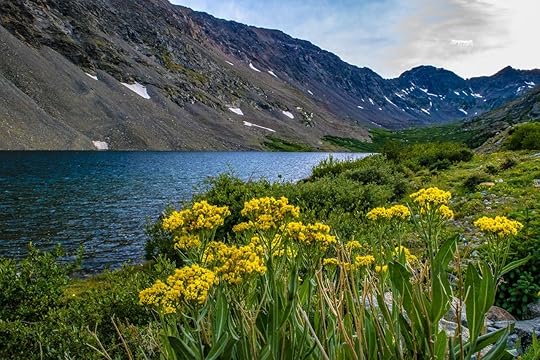
Photo: Jeremy Janus Photography/Shutterstock
Breck’s wildflowers begin blooming when the snow starts thawing, and they generally peak in July. The forest floor disappears under carpets of lupine, wild chamomile, and columbine, the state flower. Iris blossoms adorn marshes; wild roses spruce up meadows. It’s breathtaking — and, like most things in Breckenridge, a great excuse to hit the trails.
If you make it to Boreas Pass Road, you’ll find meadows gilded with sunflowers in the alpine zone. In fact, most of the trails we’ve mentioned get showered with blooms of their own, whether that’s blankets of yellow arnica flowers or patches of rare fairy slipper orchids. Consider hiking around Cucumber Gulch and Saw Mill Creek for even more floral fireworks.
Beer, beer, and more beer.
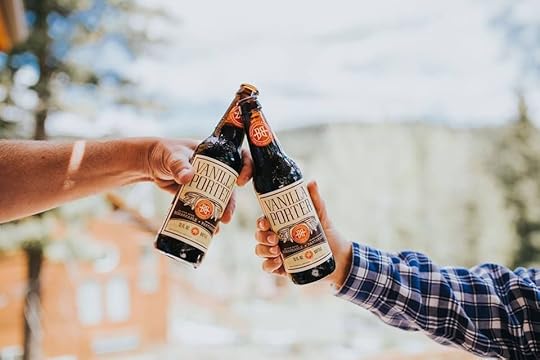
Photo: Breckenridge Brewery/Facebook
Craft breweries are serious business in Colorado. The beer culture’s strong whether it’s après-ski or barbecue season, but nothing beats a cold brew on a hot summer day, a ritual Breck residents know all about. The state’s third-oldest craft brewery, Breckenridge Brewery, has been a beloved fixture on Main Street for decades. So beloved, in fact, it’s recently expanded to a 12-acre campus in Littleton, about two hours away by car.
After big hikes, locals rely on the downtown location to refuel with a refreshing Summer Pils or Hop Peak IPA and Colorado-style pub fare like elk meatloaf or beer-cheese fries. It’s usually busy and always easygoing, so expect to meet new friends at the bar while the pub’s centerpiece, a row of brew tanks, stores upcoming batches just behind the bartender.
The real heavy-duty equipment is in Littleton, which makes an excellent outing for the Breckenridge-level beer enthusiast. Stop by for a 90-minute tour of the 100-barrel brewhouse and state-of-the-art facilities before a tasting. Stay for lunch in the airy Farm House restaurant, and cap it all off with a game of corn hole on the lawn. To really lean into the Breck lifestyle, cycle rather than drive the 17 miles to Littleton, which connects via a nice, neat trail.
All that said, there are bound to be those for whom trying a new beer with lunch or sampling a flight on a brewery tour still just isn’t enough. To them, we say mark your calendars for the Breckenridge Summer Beer Festival on July 13. More than 40 breweries will arrive outside the Beaver Run Resort & Conference Center to rep their brands as folks bounce from tastings to food stalls to live performances by the Frisco Funk Collective and more.
Plus the highest distillery in the world.

Photo: Breckenridge Distillery/Facebook
Okay, this isn’t season specific. But if drinking’s your thing, summery Saturday evenings are ideal for upgrading the beer-and-shot combo by downing a Vanilla Porter at the Breckenridge Brewery and then moseying down the street for a sip of bourbon at the Breckenridge Distillery. The impressive elevation may get you in the door, but the whiskey will make you stay.
Whitewater rafting is a lot easier when the rivers unfreeze.
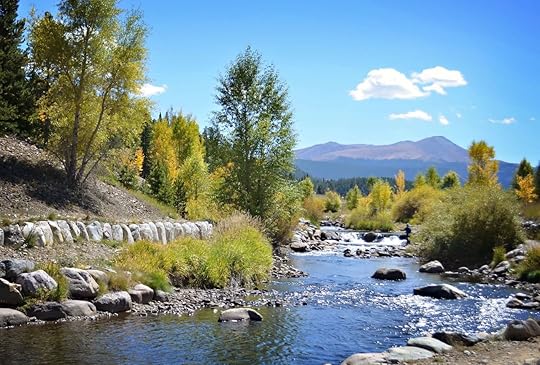
Photo: Nicki Rose/Shutterstock
Rafting rockets to the top of many Coloradans’ agendas as soon as the rapids start picking up in spring. Only an hour from the Arkansas River, generator of some of the best whitewater in the state, if not the country, Breckenridge is an excellent choice for rafters of all skill levels. Nearby, the Blue River beckons both seasoned hobbyists and beginners keen on guided trips, which kids as young as three have been allowed to join. Come in June to kick off peak rafting season.
If you aren’t done soaking in the Gore Range scenery after tackling the rapids, switch to fly fishing mode. The Blue River is teeming with trout and welcomes licensed anglers and tour groups. If, on the other hand, it’s more time on the water you want, try stand-up paddleboarding or paddleboard yoga at Maggie Pond, created from the Upper Blue River.
The events calendar is stacked from June to August.

Photo: Breckenridge Creative Arts/Facebook
Breck doesn’t just perk up in summer because everyone’s excited to shed their thermal underwear and go patio surfing. There’s also a lot going on, from food and wine tastings to art exhibitions and live music — even a Gold Panning Championship.
This year, the WAVE Light + Water + Sound festival will kick things off from May 30 to June 2. Artwork including an interactive lightbulb installation and large, lacey wire sculptures will take up residence around Blue River Plaza, to be admired when attendees of the free event aren’t at a short film screening or listening to music, be it a pop-up orchestra or an audio installation.
On August 9-18, the Breckenridge International Festival of Arts will double down on the music, film, visual arts, and dance. Not just any dance — think aerial performances by vertical dancers who use the sides of skyscrapers, heritage sites, or, in this case, mountains as their stages. Other festival highlights will include riverside yoga and remedial environmental installations by eco-artists Mary O’Brien and Daniel McCormick.
Not just beer geniuses, the folks at Breckenridge Brewery also put on a summer concert series in Littleton called On Tap with KBCO. This year, Guster and St. Paul & The Broken Bones will liven up Brewery Lane on June 30, and Dawes and Moon Taxi will play August 10.
In between art and music extravaganzas, class it up at the Breckenridge Food and Wine Festival on July 26-28. Tastings will feature 300 wines from around the world, representing more than 70 wineries from Spain to New Zealand. Later, balance the scales with bacon and bourbon pairings at the Breckenridge Hogfest on August 23-25. Oh, and don’t forget that beer fest in July. 

More like this: The most epic day trips from Denver you need to take
The post Why Colorado’s Breckenridge ski resort is even better in the summer appeared first on Matador Network.

Craft beer history of Grand Rapids
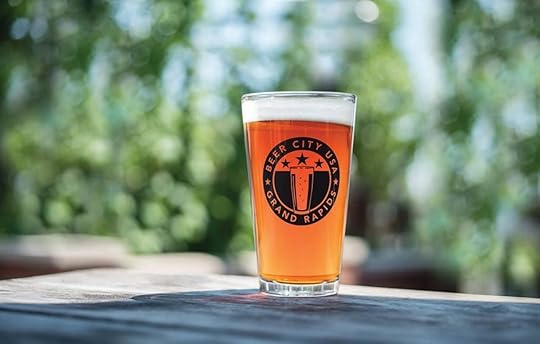
There are more than 7,000 breweries in the US, and the number is only growing. In some parts of the country, it feels like a new craft brewery opens up every week. Only one city, however, rightfully goes by the moniker Beer City USA, and that’s Grand Rapids, Michigan.
Grand Rapids has it all when it comes to the world of craft brewing, from classic, decades-old craft breweries to young upstarts. When the city originally became Beer City USA in 2012, it had 13 breweries. Today, it has nearly 40. From epic tasting flights to chilled out taprooms, it’s quite easy to get comfortable. That didn’t all happen overnight, though.

Photo: Experience Grand Rapids/Facebook
Throwing it back to the turn of the 20th century, Grand Rapids already had quite the effort going. In 1849, the city’s first brewery — aptly titled City Brewery — was opened by a German immigrant named Christoph Kusterer, spurning a budding movement of breweries in the area. In 1893, six of them combined into the Grand Rapids Brewing Company, which rose to prominence as a dominant force of carbonated deliciousness as the century closed.
Another of the city’s early beermakers was G&C Christ Brewery. Nearly as old as Grand Rapids itself, Christ got its start not long after the city incorporated in 1850. It was one of four major breweries supplying Grand Rapids with beer at the end of the Civil War. In 1875, the city’s breweries reached an average annual output of 16,000 barrels. Employing more than 150 men citywide, the brewing industry had a total production value estimated at $600,000. But, even with their successes, advancements in transportation practices and pasteurization meant Grand Rapids brewers had to compete with out-of-state brewers like Anheuser-Busch.
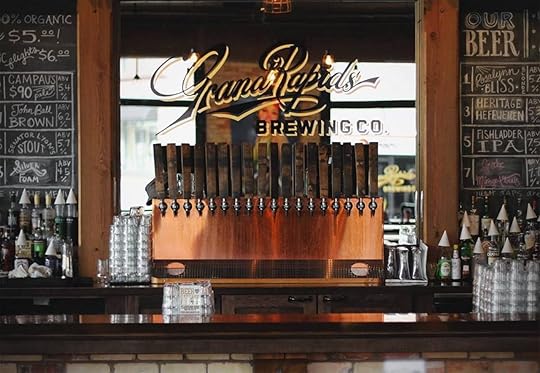
Photo: Grand Rapids Brewing Company/Facebook
Then Prohibition came along in 1920 and shut down large and small breweries alike. Even though Prohibition ended in 1933, it took time for the Grand Rapids beer scene to start up again. Some in Grand Rapids attempted to revive the city’s beer-making culture in the 1940s and 1950s, but the city maintained its dry spell. It wasn’t until the late 1990s that beer returned to its former glory in Grand Rapids. Today, you can visit the new Grand Rapids Brewing Co., which is located not far from the original location. The new brewhouse honors its forerunner with a twist on the classic lager it brewed back in 1893.
Craft beer finds a home.
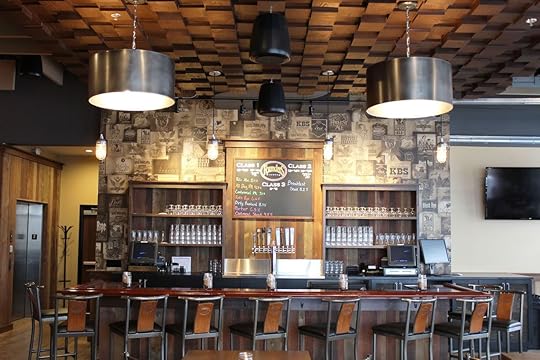
Photo: Founders Brewing Company
The 2008 financial crisis hit the Midwest particularly hard. Mounting job losses throughout the state of Michigan impacted tourism to Grand Rapids and the nearby beach towns along Lake Michigan. City planners recognized an economic opportunity in the city’s growing craft beer scene, led by Founders Brewing Co. which opened in 1997. It moved to embrace the economic opportunity of beer almost from the beginning, using it as a way to bring people in when there wasn’t much growth happening in the region.
At the time, there were 1,396 breweries in the country, only a small handful of which were in Grand Rapids. The city’s tourism initiative launched a variety of programs to promote and support Grand Rapids’ craft beer scene, eventually building it into one of the top draws to western Michigan. Founders witnessed the beginning of America’s craft brew obsession and used its rising popularity to help its hometown build a reputation as a destination for the rising craft beer craze.
Founders helped launch Grand Rapids’ “Beer City” reputation, but it’s far from the only game in town these days.

Photo: Michigan Brewers Guild/Facebook
Today, more than 40,000 beer tourists visit the city each year, following the tourist initiatives set forth by the city. The Beer City Brewsader app is among the most popular, allowing users to collect passport stamps from eight of the area’s breweries to earn a Brewsader t-shirt. Grand Rapids also offers various transportation options for safe travel while you’re tasting craft beer around the city.
GR Beer Tours provides a guided brewery hop experience while Beer City Runner allows you to hop on and hop off at taprooms throughout town. You can also plan your trip to Grand Rapids around one of the city’s annual craft beer festivals. The Winter Beer Festival, put on by the Michigan Brewers Guild, is an iconic winter event along with Founders Fest, which takes place each June. Beer Month GR, hosted by the city’s tourism bureau, highlights local craft efforts throughout the month of February.
These days, the city draws students from around the nation interested in learning the craft of brew. At Grand Rapids Community College, the Fountain Hill Brewery is operated by students studying towards their Craft Brewing, Packaging, and Service Operations certificates — and if you visit on a Wednesday or Thursday evening, you can put their study skills to the test in the taproom.
Grand Rapids breweries continue to innovate.
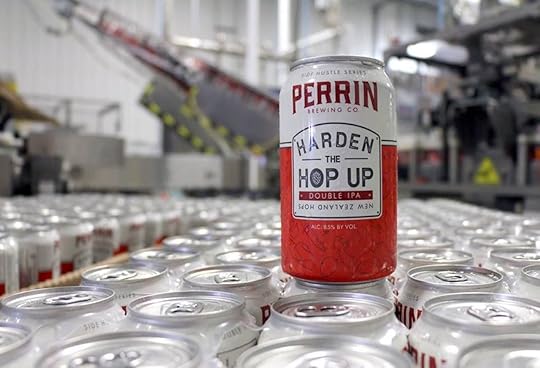
Photo: Perrin Brewing Company/Facebook
In spite of its popularity, craft beer still has its haters. Purists like to throw out the “if it ain’t broke, don’t fix it” ideology, maybe cracking open a Bud Light as they smirk. And, when you can find a decent craft beer anywhere in the country, why would someone make the effort to come to one specific place to have one?
The answer, in Grand Rapids’ mind at least, seems to be “adventure.” From the big brewers like Founders down to the 340-square-foot brew floor at Greyline Brewing — which produces less than 1,000 barrels per year — the city’s beer legacy is built on innovation. There’s a bit of childhood nostalgia in the Chocolate Strawberry Milk Stout from City Lights Brewing and a dose of camaraderie in the pub ales from Brass Ring Brewing. Perrin Brewing, just north of the city center, is part of the nationwide CANarchy organization, a collective of craft brewers around the country fiercely dedicated to the progression of independent brewers.
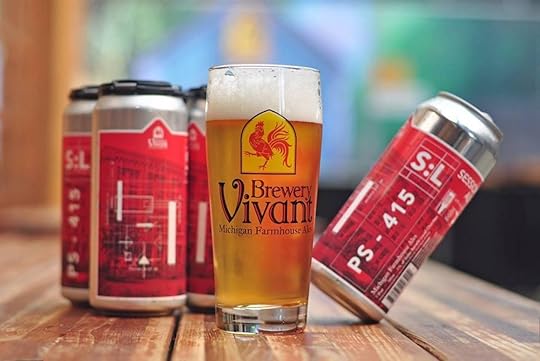
Photo: Brewery Vivant/Facebook
They also take notes from acclaimed beer scenes around the world. Take the city’s Brewery Vivant as a prime example. Passionate about Belgian and French styles of beer, this spot specializes in farmhouse beers shaped after a trip to the French-speaking Belgian countryside. The brewers visited numerous small farmhouse breweries and found inspiration in Wallonia, Belgium. They’re also the world’s first LEED-certified microbrewery, emphasizing sustainability over mass-production. This attitude, a value of quality over quantity and of continually improving the product, the process, and the experience, is what put Grand Rapids beer culture over the top. 

More like this: The 9 most underrated European cities for craft beer lovers
The post How Grand Rapids remade its craft beer scene into the best in the nation appeared first on Matador Network.

Where to eat at the Denver airport
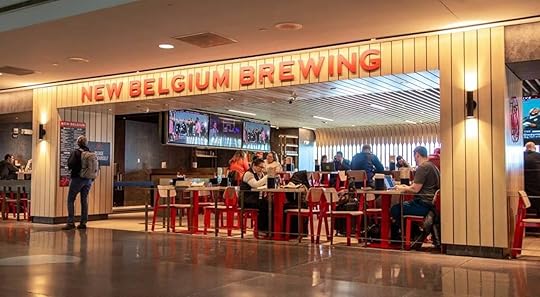
The Denver International Airport is one of the busiest hubs in the world (and the most suited for conspiracy theories complete with horses and gargoyles). From here, you can go to some 200 destinations, making it a common place for a layover. Luckily, the airport is packed full with all the things that make Denver’s food and drink scene so good: local craft beer, hearty Mexican-American food, and steak.
Whether you got to the airport far too early or you’re waiting out a delay, these are the best breweries, bars, and restaurants in every section of the Denver airport.
Concourse A
Breckenridge Brewery by gate A71: Airport outpost of beloved Breckenridge Brewery, which has been making craft beer in Colorado since 1990. House beers on tap including seasonal options along with spirits and wine options. The eats are standard American bar food.
Denver Central Market by gate A48: Denver does food halls exceedingly well, and the city’s airport does it pretty well too. This airport outpost of the actual Central Market has options like pizza, cheese and charcuterie, and sushi.
Snarf’s Sandwiches by gate A73: A grab-and-go sandwich shop with gluten-free options as well as soups and salads.
Chef Jimmy’s Bistro & Spirits in the center concourse: Italian-American food and a full bar. Three-meal type of place with omelets and French toast for breakfast and sandwiches, salads, pizza, and pasta for lunch and dinner. It’s worth taking your meal sitting down if you have time, but there are grab-and-go options as well.
Mesa Verde Bar & Grill by the gate in the center mezzanine: Colorado Mexican food like burritos (and breakfast burritos), nachos, tacos, and quesadillas. One big draw is the full bar, which has local beers as well as a large tequila section.
Denver Chophouse and Brewery in the center concourse: Beer and food from Denver’s Rock Bottom Brewery Co. It has a mid-20th-century steakhouse vibe, but with modern craft beer and healthy portions of steak, burgers, and chicken.
Concourse B
New Belgium Sports Bar by gate B30: Brewery and restaurant from the beloved craft brewery New Belgium. Along with the house beers (including harder-to-find sours), there’s American wines and a full range of spirits. The food is a bit all over the place, with classics like burgers and breakfast burritos. Farther down the concourse by gate B60, you’ll find the New Belgium Hub, which offers similar beer and food.
Elway’s in the center concourse: Named after Colorado’s favorite quarterback and NFL general manager. Come if you’re looking for a higher-end surf-and-turf-style menu with options like fish, steak, and shellfish, plus a full bar.
Lounge 5280 Wine Bar in the center mezzanine: Stop in for a curated wine list, Colorado craft beer, and cocktails. There’s bar food and small plates if you’ve got some time to break up your pre-flight drinks.
Cantina Grill by gate in the center mezzanine: Standard Mexican-American food that you’ll find around Colorado like thick loaded burritos and tacos. The restaurant also has a full bar.
Concourse C
Root Down DIA in the center concourse: Farm-to-table food, or at least as close to farm-to-table as you can get in an airport. The seasonal menu has standard sandwiches, salads, and soups, and the full bar has a selection of pretty much whatever you’re in the mood for — even if you’re in the mood for sake.
The Magic Pan by gate C28: Crepes to go. Sweet and savory options are on the menu and made to order, and there are ice cream and sundaes to satisfy your sweet tooth.
Tamales by La Casita in the center concourse: Mexican-American fare like burritos, quesadillas, and tacos. There’s also, as the name implies, tamales. Come for breakfast for a breakfast burrito or huevos rancheros.
Tapas Sky Bar by gate C24: Specialty cocktails, 16 well-chosen wines, and 12 Colorado craft beers. Small plates like cheese boards and salads are available if you just want something to munch on.
Jeppesen Terminal
Boulder Beer Tap House on Level 5 West: Boulder, Colorado, is just as much a wonderland for beer lovers as Denver is. This airport outpost pours craft beer from Boulder Beer Company and serves up classic bar food.
Red Rocks Bar & BBQ on Level 5 East: Plenty of local craft beer on draft to wash down sandwiches and plates of smoked brisket, turkey, pork, and chicken. 

More like this: What to eat in Denver, according to Denver’s best chefs
The post Where to eat and drink at the Denver International Airport appeared first on Matador Network.

Herpes outbreak at Coachella

Yeah, Coachella is supposed to be a “life-changing experience,” but this kind of “life-changing” might not be what you had in mind when you bought that ticket. According to reports, there has been an outbreak of herpes at the popular music festival in southern California. Dr. Lynn Marie Morski from HerpAlert, an online herpes treatment service, told PEOPLE that they usually handle 12 herpes cases a day in southern California, but during the first two days of Coachella, that number skyrocketed to 250.
Throughout the duration of the festival, which began on April 12 and ended on April 21, 1,105 cases of herpes have been reported to HerpAlert from Los Angeles, Orange County, San Diego County, Indio, Palm Desert, and Coachella Valley — all of which have been inundated with festival goers. Morski said that herpes symptoms typically appear days after infection, explaining why cases are relatively spread out and not simply limited to Coachella Valley.
The virus is transmitted either from oral or sexual contact and results in herpes on the afflicted areas that could potentially be lifelong infections. The Coachella outbreak topped HerpAlert’s previous record of reported cases when 60 cases were logged in a single day during Oscars weekend. 
H/T: Entertainment Weekly

More like this: Every summer music festival lineup that’s been announced so far, and who you need to see
The post Herpes cases skyrocketed at this year’s Coachella appeared first on Matador Network.

Matador Network's Blog
- Matador Network's profile
- 6 followers



